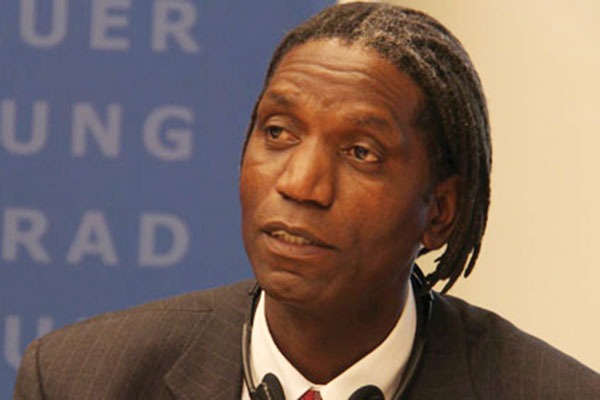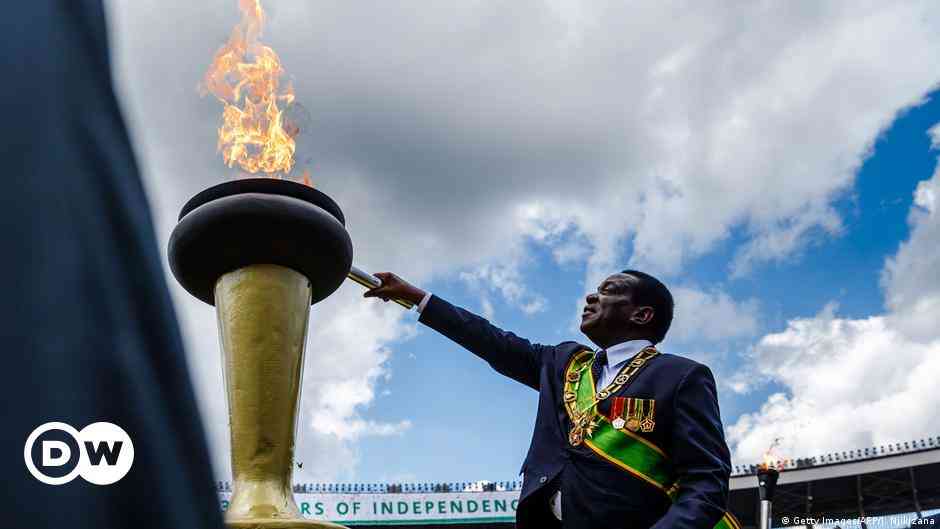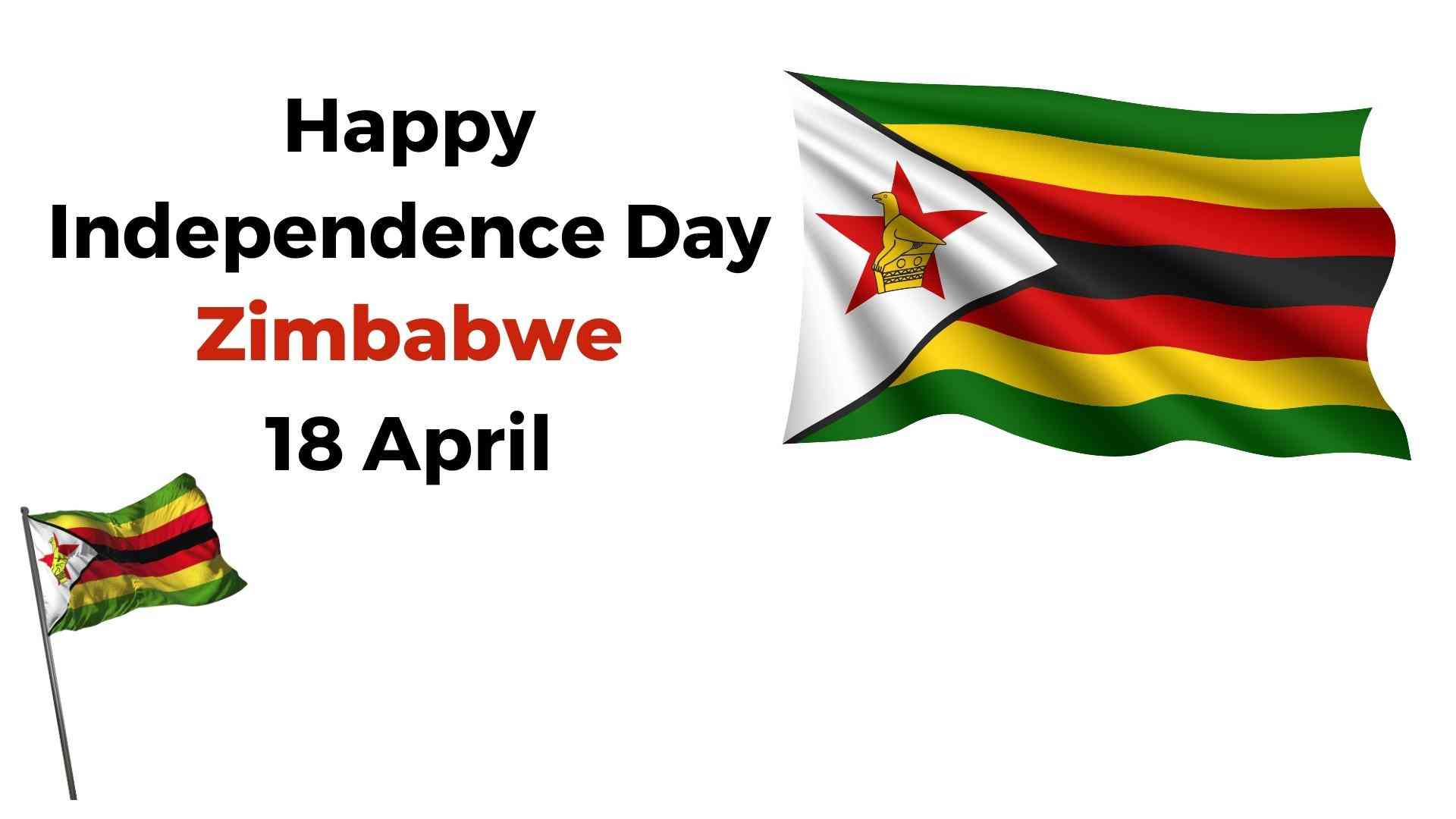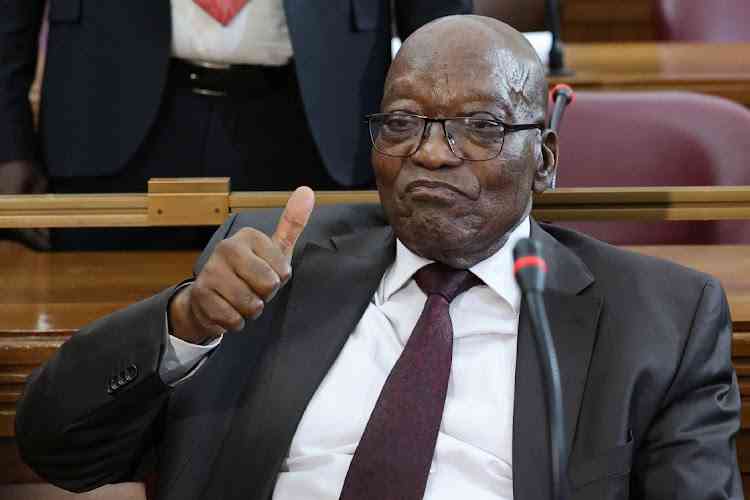
By Rejoice Ngwenya
IN making this submission to parliamentarians, policymakers and national governance influencers, we are well aware of subterranean innuendos about how State-owned enterprises (SOEs) exist solely for “public interest”.
We also need to confront the myth that anything “private”, as compared to “public” is unaffordable to the average citizen. True, not all private enterprises successfully offer value for money, but our team has gathered enough evidence to prove that government is certainly not the best contraption to do business on behalf of citizens. Our timeless argument is based on simple economic theory: Where there is fair competition, prices tend to be affordable, or at least competitive. Monopoly, no matter how justified, breeds complacency, inefficiency and high cost. SOEs are rooted in history, thus we at Comaliso feel it is time to move on and let government and State focus only on one thing: Good national governance.
Our research showed that Zimbabwe has over 100 SOEs accounting for a miserly 12% of gross domestic product from a peak of 40% in the 1990s. They are classified into strategic public enterprises, non-strategic viable or potentially viable commercial or industrial public enterprises, non-viable public enterprises with no strategic or social function and public enterprises with a social or developmental role. This classification is critical as it determines the privatisation matrix.
The subtle difference between parastatals and State-owned enterprises is that the former is established by a special Act of Parliament to carry out a socio-economic mandate for the benefit of the public, while the latter is an entity in which government has a “for profit” equity stake, registered in terms of the Companies Act.
SOEs play a critical role in the development algorithm of any economy — only if managed efficiently. Where they are poorly managed, they often pose systemic risks by their failure to stick to corporate governance protocols. Support often leads to budget deficits, inevitably financed through the Reserve Bank of Zimbabwe, leading to inflation and subsequent, if not ultimate catastrophic output contraction.
Rationale
SOEs are supposed to follow these guidelines:
- Chamisa under fire over US$120K donation
- Mavhunga puts DeMbare into Chibuku quarterfinals
- Pension funds bet on Cabora Bassa oilfields
- Councils defy govt fire tender directive
Keep Reading
- The Public Finance Management Act.
- Performance management guidelines for State enterprises and parastatals.
- Public Entities Corporate Governance Act.
- Zimbabwe corporate governance framework for State enterprises and parastatals 2010.
- Corporate governance principles approved by Cabinet in March 2014
- Government guidelines on board and senior management and remuneration.
However, government-run businesses are heavily implicated in fiscal problems because of their inefficiency, budgetary constraints and poor provision of products and services due to gross mismanagement, inefficient use of productive capital, corruption, dilapidated equipment, lack of credit lines, and debt overhang.
Therefore, if there was any doubt on the need for government to rid itself of its fiscal responsibility and obligation to SOEs or parastatals, here is why. A cursory look at the Auditor-General’s report for the financial year ended December 31, 2019 on State enterprises and parastatals presented to Parliament in 2021 is instructive of our privatisation position.
We pick a few cases that unravel a slew of misdemeanours inclusive of money laundering, bad governance, non-compliance with statutory reporting guidelines and rent-seeking on the part of the various State-appointed boards. Evidence from this report is that SOEs have completely discarded their mandate, this in favour of enriching a few connected individuals.
The question being what value do they (then) offer to the citizens other than being a liability? Is it not better that they are placed in a space of entrepreneurial proficiency where the State is guaranteed dividends and royalties rather than pouring public resources into an intractable black hole?
Below is a summarised perspective on how administration of State institutions whose investment is meant to offer value for money have become a liability to citizens:
National Social Security Authority (Nssa)
An authority with a mandate to cushion twilight years of Zimbabweans committed to a lifetime of patriotic service. The report showed that Nssa was prejudiced of about US$175 million through dubious transactions. These included US$104 million of housing contracts to newly established firms owned by stakeholders who were part of the board and management.
The contracts entered into construct houses seeing US$8 million paid out for non-delivery of housing units. A former minister and some members of the management team await trial for almost US$100 million fraud, corruption and criminal abuse of office.
This has jeopardised millions of pensioners’ lives and the very sustainability of the organisation. A recent BBC report said between 2018 and 2019 the average income erosion was from US$80 to US$10 a month. Another report suggested that on average Nssa pensioners received $80 while survivor pensioners got US$32. This on the backdrop of an average size family requiring US$575 a month to afford a basket of basic goods.
Zimbabwe National Road Administration (Zinara)
An authority meant to invest in public road infrastructure using fees collected from motorists. Its former chief executive officer (Frank Chitukutuku) cannot account for contracts worth US$39 million as it has incurred losses of US$70 million with current liabilities exceeding current assets by US$53 million. Its past and present senior managers face arrest after the Parliamentary Public Accounts Committee referred its forensic audit report exposing massive corruption to the police and Zimbabwe Anti-Corruption Commission. The report concluded that the “parastatal is absolutely misrun and totally mismanaged State resources running into hundreds of millions of United States dollars.”
Even its board members are implicated in massive fraud that has placed a former Vice-President (Phelekezela Mphoko) under litigation. An audit report done by Grant Thornton, covering the period between 2011 and 2016 when Zinara was being led by Chitukutuku, exposed massive financial abuse where $142 million was paid to illegally hired road maintenance contractors. The report exposed a massive abuse of funds by the road administrator during the period under review. Zinara collected $589,2 million and only disbursed $160 million (27,3%) and gobbled close to $428,4 million (72,7%). Grant Thornton also exposed a cocktail of irregularities such as weak internal controls of the road fund, resulting in losses of millions of dollars where senior executives allegedly manipulated the parastatal’s more than 59 bank accounts to siphon public money for personal gain.
National Railways of Zimbabwe (NRZ)
Debt of the insolvent NRZ rose astronomically from US$314 million in 2017 to US$575 million in 2018, fuelled by unpaid salaries and mounting arrears owed to various creditors. These poor performances have had one of the most fundamental questions asked about NRZ: What went wrong? According to African Development Bank (2011), between 2000 and 2009, capacity utilisation of the rail system dropped from over 50% to below 15%. Freight cargo plummeted from 9,4 million to 2,7 million tonnes from a once-upon-a-time peak of 14,3 million tonnes riding on 80% utilisation in 1990.
Despite several attempts at resuscitating this entity to contribute meaningfully to national goods and passenger carriage, NRZ liabilities and loan obligations are in the quantum of billions. Both goods and passenger carriage capacity have been reduced to almost a quarter of what it was 30 years ago, with millions of dollars owed to employees. Its infrastructure has totally collapsed with some companies now opting for private hire of railway stock. The Auditor-General has boldly stated how it “casts significant doubt on National Railways of Zimbabwe’s ability to continue as a going concern” whose operating loss is not less than one billion dollars.
Other public institutions under scrutiny but not adequately covered in the Auditor-General’s report:
Zimbabwe Electricity Supply Authority (Zesa)
Zesa was originally set up to fulfil the entire electricity energy needs of the country. Even with an installed (and demand) capacity of more than 2 000 megawatts, real power generation capacity is still 1 300MW, not sufficient to run the economy thanks to under-capitalisation, corruption and incompetence. Its liabilities are calibrated in billions of dollars as the country suffers from incessant power outages. Electricity supplies, however, were attributed to bilateral concessions from South Africa‘s Eskom and Mozambique‘s Hydro Cahora Bassa. In 2019, Zesa owed Eskom and Hydro Cahora Bassa around US$83 million. By end of that year, Zesa owed Eskom R322m. Multi-million-dollar scandals involving prepaid meters and solar projects paid for in advance with no delivery; tendering and procurement process exploited to siphon billions of US dollars while equipment rehabilitation costs are inflated to benefit executives. This is a disservice to the innocent citizens of Zimbabwe.
Air Zimbabwe
When Air Zimbabwe took to the skies in the 1980s, it was one of the best-run airlines in Africa. By the time it ceased operating, the SOE owed local creditors $340 million and foreign creditors US$30 million. Researchers say Airzim‘s operational problems arose from an interplay of factors that included a weakly constituted statutory-appointed board, abuse by senior government officials, under-capitalisation, an aging fleet, debt overhang, poor management, corruption and mismanagement.
Despite spirited attempts at resuscitating it, it is all but a pale shadow of its past — a typical example of why the State should not dabble in business. Several of its former executives are serving jail terms for US$10 million insurance fraud referred to by a presiding magistrate as “having brought Air Zimbabwe to its knees”.
Ziscosteel
Ziscosteel at its peak employed more than 5 000 people, cared for Redcliff, a community of more than 30 000 citizens and at one time accounted for nearly 30% of Africa’s grade “A” steel. However, due to incompetence and corruption mainly by State-appointed entities and Cabinet ministers, the company is now fossilised, requiring no less than one billion United States dollars to resuscitate.
Zimbabwe Passenger Company (Zupco)
Before and a decade after independence, it was arguably one of the best-run public bus companies in southern Africa, with indelible local urban, rural, intercity and inter country routes. It boasted a fleet of close to 1 200 buses, 5 000 employees and a strong institutional and terminal infrastructure serving 430 routes. Highly professional staff, exquisite time-keeping and safe travel was Zupco’s corporate hallmark. Once the private-public partnership model was tinkered with, the entire system collapsed under a sandstorm of corruption, nepotism, partisan interference and mismanagement. Zupco’s entire infrastructure lies in ruin, with thousands of drivers, mechanical and administrative staff retrenched as former board members were arraigned in courts for a myriad of misdemeanours. Its monopolistic stranglehold could not save it, only now that the government is on a new trajectory of rebuilding the company. Inevitably, there is a new generation of controversies on how bus supply tenders and route contracts are awarded; not least the new monopolistic regulations that have disenfranchised thousands of private minibus operators and endangered millions of livelihoods.
Cold Storage Company (CSC)
At independence, the Bulawayo complex was the largest meat slaughtering facility in Africa with the Botswana Meat Commission a distant second. CSC was one of Zimbabwe’s major foreign currency earners. The beef processor and marketer handled up to 150 000 tonnes of beef and associated by-products annually and exported to the EU, where it had an annual quota of 9 000 tonnes of beef. CSC plays a key and central role in ensuring that the livestock sector once again becomes vibrant as farmers find a sustainable and ready market. Currently, CSC groans under a debt burden of over US$35 million mainly from costs such as wages, rates and taxes on land. The meat processor owes workers over $2 million in outstanding salaries and former employees over $3 million in gratuities.
Just like in the Zupco case, its vast infrastructure lies idle as the government attempts to review its business model with offers to private players. Again as in the case of Ziscosteel, the CSC debt burden and other liabilities are a stumbling block in attracting viable private participation, not to mention undefined terms and conditions of such participation.
The main tragedy about the above-quoted cases is that hundreds of similar situations in scores of SOEs go unrecorded. Our assertion is that billions of dollars in SOEs are misappropriated while the State continues to inject resources into a black hole. Our submission is, therefore, that it is better to sell-off these assets and save State money.
Our policy option objectives
One of the most successful case studies in unbundling the State from business is the conservative rule of Margaret Thatcher. According to John Blundell, Thatcherite privatisation had three pillars:
- Right to buy and sell off public assets.
- Contracting out public services to private companies.
- De-nationalising from public to private ownership.
In all cases, one can see that the main objective is to remove from the State the burden and complication associated with non-governance business, at the same time offering value for money and competition for citizens. All the State does is collect dividends, then channel them into public development projects. Privatisation does not remove the State’s social responsibility obligation because it still retains its regulatory role. It can still use proceeds/dividends from the companies to invest in public infrastructure.
Desired outcomes
It is a myth that privatising Air Zimbabwe or Zupco — for instance — will “increase the cost of passenger tickets”. Equally, it is not true that privatisation is meant “only to hand over expensive State assets to ownership of a few people”.
Comaliso’s moral argument is that no matter which way one looks, ticket subsidies offer only short-term relief as the taxpayer will eventually bear the full wrath of incompetence. Our view is that it is better to pay a competitive, free market fare that can create enough reserves for capital and recurrent expenditure. Done properly, it empowers citizens or whole communities. The institution or company then attracts better capital and strategic partners based on enhanced viability, efficiency and quality of service provided. Thirdly, the State will not agonise over monopolistic laws and finally, there is a drastic increase in the quantum and quality of services provided. Blundell is more succinct with his list of “benefits”: Lower prices; better quality; more choice and variety; less corruption; more investment; more innovation; better management; better measures; less industrial action.
Best practice — national, regional, international
Privatisation of State assets is not a new phenomenon. In 1957 the Federal Republic of Germany pursued privatisation as an economic policy for the first time when the government sold the majority stake of Volkswagen to private investors. This was later followed by privatisation of British Telecom in the 1980s and the privatisation of large banks in France, and then spread to other continents. The fall of the communist regime in Eastern Europe and the former Soviet Union led to the acceleration of privatisation in the affected countries, even in traditionally socialist countries like China and Cuba. Zimbabweans are familiar with the “death” of CSC and Arda. There is no need for a full lesson on how State control can destroy a well-meaning enterprise.
However, empirical evidence abound that well-meaning State-sponsored privatisation can yield results. In addition to already known examples like Dairibord Zimbabwe Limited, Cotton Company, Commercial Bank of Zimbabwe and Zimbabwe Reinsurance, below are a few other cases.
Central Mechanical Equipment Department (CMED)
For two decades, the CMED became an exemplary beacon in its “failure to provide essential transport services to all government departments, ministries including the very very important people (VVIP), who included the President, Vice-Presidents and ministers.” This was worsened by a multi-million-dollar corruption scandal, unsustainable $4 billion debt and intractable inefficiency, leading to its “commercialisation” in 2000. Transforming the CMED into a private enterprise has boosted its business portfolio into fuels and lubricants, a driving school, a car-hire service, reconditioning services and vehicle maintenance and repairs.
It is important to note that commercialisation and privatisation of SOEs is practised successfully in many African countries as observed above. There are of course, different models of privatisation — Ethiopian Airline being a case in point — a private company where the State has a controlling stake but not involved in day-to-day running as compared to Air Zimbabwe which is run directly from a ministerial desk.
Other best practices are summarised below:
South African Airlines
After years of pouring billions of rand into a dysfunctional and corrupt entity, the South African government has finally let go to the controlling hands of Takatso Consortium, with a mandate “to turn SAA into an iconic South African brand and a world-class pan-African airline.”
British privatisation
As late as 1979, the UK was losing three billion pounds in SOE financing but privatisation injected more than £34 billion into State coffers. It is also not just about money, but citizens’ attitudes towards economic responsibility, concept of private property, respect for free enterprise and innovation. British Telecom remains one of the largest public flotations in the world with shares worth over four billion pounds sold, to over two million citizens and 90% of its employees.
Our policy options
There are several options that we as Zimbabweans can adopt, however, a more sustainable feature of democratic privatisation is that people of all kinds must have a fair opportunity to buy and own shares. SOEs become an integral part of private enterprise that should result in job creation rather than large-scale retrenchments. Of course, there may be fears of domination and foreign control; never mind erosion of the State’s social responsibility role. Our point is that the State must fund its social responsibility through profit rather than subsidies.
Moreover, we are alert that the selling must be seen to be fair – eliminating known capitalist cronies, political cronies, underhand and insider dealing – to maintain integrity and credibility.
Citizen ownership
The first port of call is to have an honest assessment of enterprise worth, then create shares that citizens can buy as individuals or as groups. A specific percentage must be set aside for citizens, rather than preferred corporations. Sometimes even institutions and community-based Organisations (NPOs) can invest in such shares to finance their programmes from dividends. Comaliso looks at this as a form of cultural revolution, where equity ownership is put in the hands of citizens, not some hologram called “government”.
Employee ownership
Another policy is to create a system of continuity where a sizeable chunk of the enterprise is sold to employees. When they know their very survival depends on productivity, employee-owners exert more effort. Payment for shares is through outright purchase, terms or liquidating pensions. Of course not all will want to be part owners, but the motivational and sense of ownership decibel is pretty high.
Consortiums
Some State assets are of high value, with high stakes, thus may require involvement of organised financial consortiums — as in the SAA privatisation case. Consortiums not linked to international companies or any other forms of FDI are best suited since these are public assets created from tax value. For Zimbabwe, we can see farmer organisations, mining associations, other professional (accounting, business, industrial and educational) associations and pension funds investing in these shares.
The overall policy goal is to transfer SOE assets into the hands of citizens so that the government burdens itself with matters of good governance rather than business. To us, it makes absolute common sense.
General recommendations
In crafting this blueprint on democratic privatisation and citizen control of State-owned enterprises (SOEs) in Zimbabwe, we are alert to a number of “negative force” aspects. Many Zimbabweans of socialist orientation — even conservative liberals — strongly feel that the State has an obligation to own and run enterprises “to protect vulnerable citizens from the vagaries of exploitative free market pricing”. Moreover, it is assumed that some services are not viable enough to attract private investors “generally obsessed with the bottom line”. Thus, these citizens believe that government subsidies cushion them from vicious market forces preoccupied with profitability. There exists a school of thought that central government has to have a stranglehold on the country’s strategic asset to allay the fears as opined by Zimcodd in the dialogue box. The question being: at what cost to the very citizen on whose behalf the government wants to act?
In this proposal, we are not saying NetOne pricing is “better” than Econet and Telecel only because the latter are privately-owned. Our assertion is that prices would be better if there was no monopolistic control of the telecoms market and NetOne would be allowed to compete with Vodacom, MTN, Telecel and Econet. But because NetOne is an SOE, the government will do all it can to keep out other players — which is what we are saying creates a subtle, monopolistic cartel-like market that distorts (free) market pricing. We, therefore, make the following as our recommendations:
l All State institutions with a business orientation are revalued by independent auditors, banks and brokers and put on the market for privatisation.
- The prices of shares are fixed for small individual citizen buyers and tendered for institutional and corporate investors.
- The proceeds from sales are not channelled to recurrent expenditure but public infrastructure like roads, schools, and hospitals and where possible institutions of higher learning oriented towards research and innovation.
- The sale is an opportunity for ordinary local Zimbabweans to own shares in companies that are going concerns with a potential for high dividends.
Conclusion
Let us put this in context. It is not true that all SOEs are a burden to the national fiscus. Also, there is truth in that in China and Sweden, “State capitalism” has triggered multi-trillion-dollar development and almost incalculable national reserves. We understand that China, with a 1,6 billion population and 12 trillion GDP has 51 000 SOEs with an estimated market capitalisation of US$29,2 trillion that represents approximately 40% of national output. The State capitalist model sees SOEs as ultimately responsible to the government that not only owns the majority of the shares but also controls the regulatory and legal system. However, what is not agreed is that State capitalism could be the future model of economic and social development for Africa. State capitalism in Africa is a harbinger of extraction of value without adding corresponding value to society, characterised by rent-seeking, crony capitalism that benefits an elite few, weak regulatory institutions and virulent fraud that has drained away opportunities for social advancement and prosperity. Do we drop democracy and adopt authoritarianism in order for the model to work? Certainly not!
The Swedish government gets a mandate from the Riksdag to actively manage SOEs so as to ensure the best possible long-term value performance and to ensure that specifically adopted public policy assignments are performed well. Most Swedish SOEs — like their Chinese international counterparts — operate in competitive markets, making them profitable, efficient and sustainable in business. The SOEs are given the capacity to develop and 22 SOEs have been given specifically adopted public policy assignments by the Riksdag. Unfortunately, before we reach that level of public corporate discipline, we should encourage our government to focus on good governance and leave business to private citizens.
- Rejoice Ngwenya is the director of Comaliso, a local think tank. He writes here in his personal capacity.











